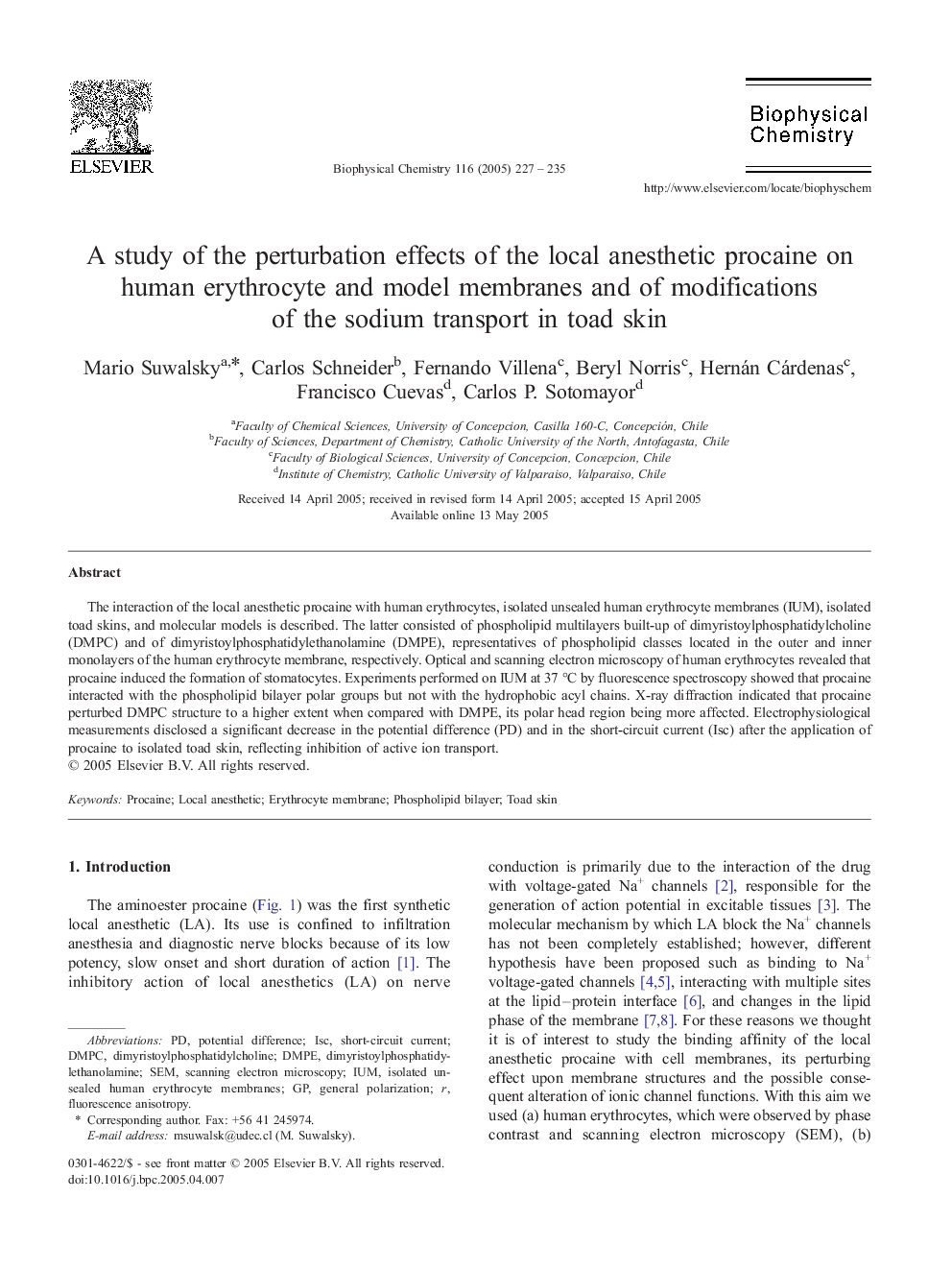| Article ID | Journal | Published Year | Pages | File Type |
|---|---|---|---|---|
| 9573428 | Biophysical Chemistry | 2005 | 9 Pages |
Abstract
The interaction of the local anesthetic procaine with human erythrocytes, isolated unsealed human erythrocyte membranes (IUM), isolated toad skins, and molecular models is described. The latter consisted of phospholipid multilayers built-up of dimyristoylphosphatidylcholine (DMPC) and of dimyristoylphosphatidylethanolamine (DMPE), representatives of phospholipid classes located in the outer and inner monolayers of the human erythrocyte membrane, respectively. Optical and scanning electron microscopy of human erythrocytes revealed that procaine induced the formation of stomatocytes. Experiments performed on IUM at 37 °C by fluorescence spectroscopy showed that procaine interacted with the phospholipid bilayer polar groups but not with the hydrophobic acyl chains. X-ray diffraction indicated that procaine perturbed DMPC structure to a higher extent when compared with DMPE, its polar head region being more affected. Electrophysiological measurements disclosed a significant decrease in the potential difference (PD) and in the short-circuit current (Isc) after the application of procaine to isolated toad skin, reflecting inhibition of active ion transport.
Keywords
Related Topics
Physical Sciences and Engineering
Chemistry
Physical and Theoretical Chemistry
Authors
Mario Suwalsky, Carlos Schneider, Fernando Villena, Beryl Norris, Hernán Cárdenas, Francisco Cuevas, Carlos P. Sotomayor,
